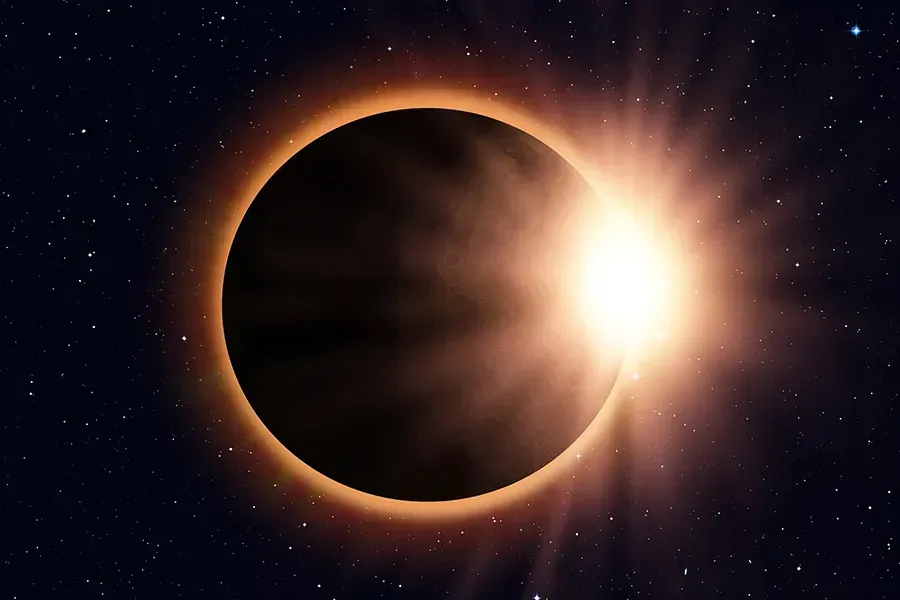Why Does a Solar Eclipse Occur?
Why Does a Solar Eclipse Occur?

When the Moon completes its orbit around the Earth in 29.5 days, and the shadows of the Moon and Earth overlap, it is called a lunar eclipse. Because the orbits of the Moon and Earth are not in the same plane, a lunar eclipse does not occur every month. Lunar eclipses happen when the planes of the orbits intersect, which occurs at least twice a year. About two weeks after a lunar eclipse, a solar eclipse is observed.
How Does a Solar Eclipse Happen?
A solar eclipse occurs when the position of the Moon, which orbits around Earth, also orbiting around the Sun together with Earth, blocks the Sun's rays from reaching us. In other words, the answer to the question, "How does a solar eclipse occur?" is directly related to the position of the Moon. When the Moon is positioned between the Earth and the Sun as it orbits around the Earth and the Earth orbits around the Sun, it allows this natural event to happen. The timing of a solar eclipse is also dependent on these cosmic movements. As long as these motions continue in the universe, we will witness solar eclipses.
What Happens During a Solar Eclipse?
During a solar eclipse, when you look up at the sky, you will see the Sun appearing shadowed. Depending on the position of the Moon, there are different types of solar eclipses.
• Total solar eclipse: During a total solar eclipse, the Moon, Sun, and Earth are in perfect alignment, and the full shadow of the Moon falls on Earth. However, since the Sun is much larger than the Moon, only a small area on Earth experiences the full shadow of the Moon during the eclipse. This area is plunged into darkness, and only bright stars and planets can be seen in the sky. Therefore, a total eclipse can only be observed in a narrow region on Earth.
• Partial solar eclipse: In a partial solar eclipse, the Moon, Sun, and Earth are not perfectly aligned as they are in a total eclipse. This prevents the Moon's shadow from completely darkening the surroundings. If you are not in the path of the full shadow during a total eclipse, during a partial solar eclipse, you can see that a portion of the Sun is obscured by the Moon.
• Annular solar eclipse: An annular solar eclipse is associated with the continuous movement of the Moon. While orbiting the Earth, the Moon sometimes moves farther away from Earth. If the Moon passes between Earth and the Sun during one of these distant periods, an annular solar eclipse occurs. In this case, when you look at the Sun, you can see the Moon as a small dot. Additionally, during an annular solar eclipse, the Moon does not completely block the brightness of the Sun.
Throughout history, solar eclipses have been among the most captivating natural events that have piqued humanity's interest. As the Moon and Earth continue their celestial dance, we will continue to witness this visual spectacle.

Powered by Soodesk



